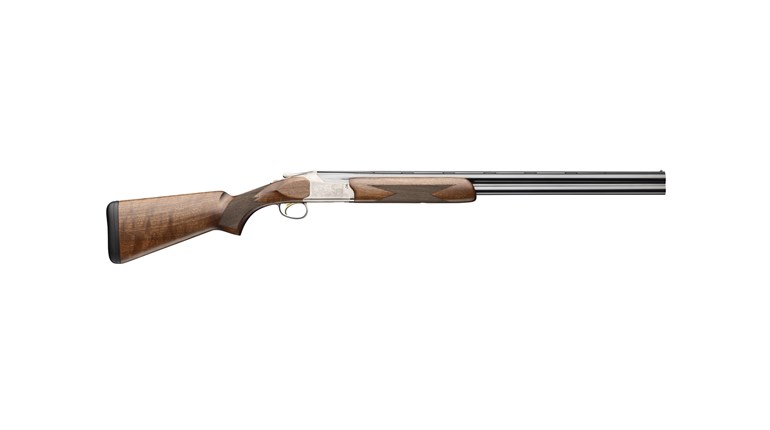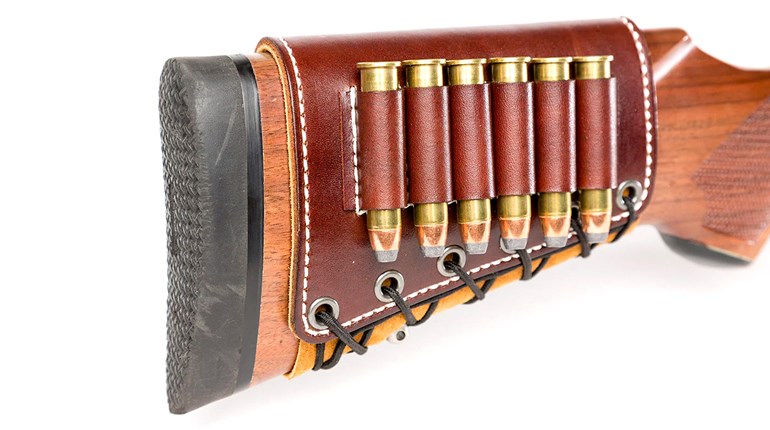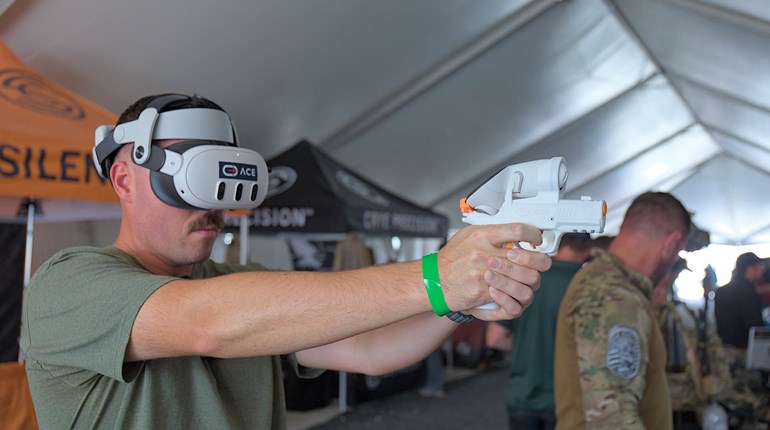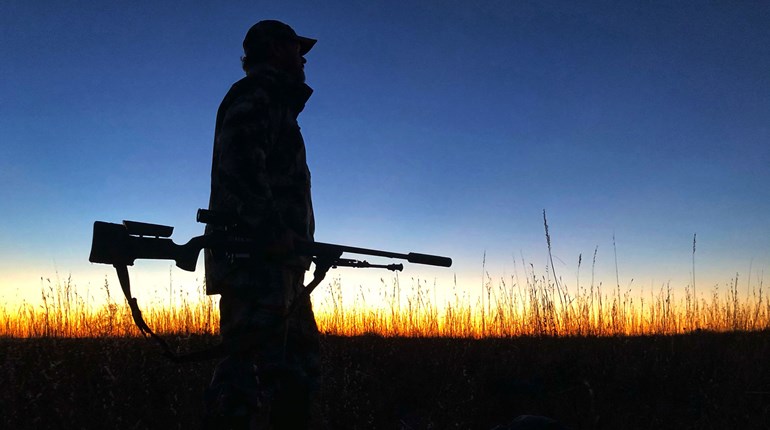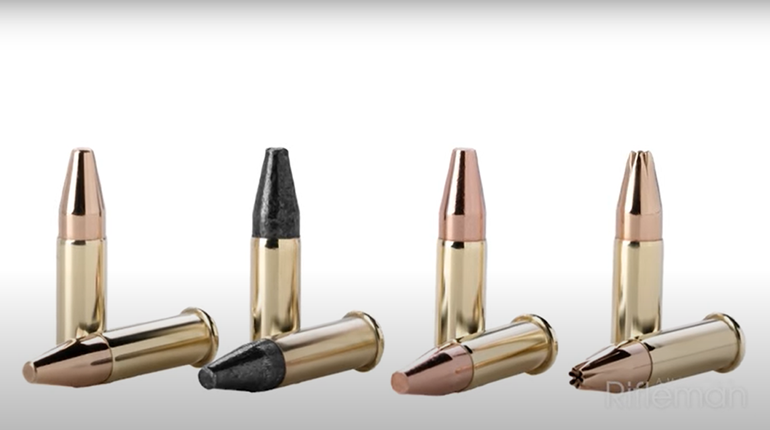
The shotguns’ report rang in my ears as the second duck of the day splashed into the water. As I thumbed another shell into my gun, I noticed my new friend Brandon Butler was doing the same. Apparently we had fired simultaneously, downing the duck with a doubly thick cloud of bismuth.
We were sitting in a pit blind on the Mississippi Flyway, overlooking a field of flooded rice lit by a gorgeous, rose-colored sky. While no hunt is ever devoid of pleasure, we found ourselves in this damp environment for more than just the fun of it. Our task in this duck-hunting haven was to examine how well Remington Premier Bismuth performs in the field, and these late-season environs were proving to be a perfect testbed. Ducks well-educated by a long season were making our every shot count.

As an added bonus, I’d brought along a scattergun from what is quickly becoming one of my favorite firearm manufacturers, the J.P. Sauer & Sohn SL5 Waterfowl. Having had great success with the SL5’s turkey variant, I was incredibly excited to put the company’s duck gun through its paces.
On the morning wore as a variety of fowl dove into view. Spoonies, mallards, pintails and shovelers dropped into range, one nearly decapitating our guide Cason as it whistled in from behind, breaking air like a fast-moving jet. Others, including some speckle-belly geese, stayed maddeningly just out of range. Regardless, whether the birds worked nicely or flew by in a huff, our bismuth loads ensured their travels ended where our dogs could reach them without breaking a sweat. With a respectable number of birds down, we headed back to the lodge for an afternoon of camaraderie.
Arkansas Charm
Byer’s Farm has been an institution in Arkansas since 1953, and it’s easy to see why. Nestled into a mixture of flooded ag fields and timber habitat just an hour away from Stuttgart, duck hunters and callers have been flocking here since its inception. The skies are constantly filled with ducks, specks, Canadas and snows, crossing overhead in a latticework of patterns. The lodge itself wears an unassuming facade of faded blue metal, but inside exudes the very essence of Arkansas duck-hunting culture. Wood paneling coats the walls. Mounts of trophy bucks and old shotguns adorning every surface. The ceiling is filled with fowl of all sorts hung frozen in flight or in an imagined final descent. Around the room, glass cases are stuffed with calls, bands, newspaper clippings and various local memorabilia. One can simply imagine the hunting stories that have been shared over the years in front of the warm stone fireplace. On this trip, however, I was a little short on stories and heavy on self-diagnosis. Something seemed off with my shooting.

Another morning of hunting and an afternoon on the clays range confirmed my suspicion: most of my shots were way off, generally high and fairly far behind. I’m far from a champion clay-shooter on the best day, but I can generally hold my own. My mind started whirring in a way nearly every shooter would recognize, likely exacerbating the problem. What was off? Was I unaccustomed to the stepped rib? Cheeking the gun too high? Maybe I was simply off my game and shooting poorly, no explanation required. With just a day of hunting left, though, I had to figure out something. It seemed no matter how I mounted the gun my hit rate was abysmal, my shot falling wherever the pigeon wasn’t. My mind wandered through scenarios until I remembered the gun’s accessory kit still sitting in my truck. I had never had to adjust cast and length of pull very much on any of my guns before. Perhaps, being of average stature, I had just been lucky. With no better idea, I resolved to try a few shims when I returned to camp and see what was comfortable.
Shimming for Success
As I stood in the mudroom, swapping through various configurations of drop and LOP, I felt a little silly. This wasn’t five-stand, and I wasn’t a competitive shooter. None of this seemed necessary for dropping ducks. Nonetheless, something spurred me to keep trying until I found a fit that felt almost like my beloved (though ancient) 48AL back home. As I headed to the pit blind the next morning, I crossed my fingers and hoped for the best.
 In an environment every duck hunter should relish, the author realized he wasn’t having as much fun as everyone else in the blind. Then he remembered the accessory kit of the Sauer SL5 in his truck, and used it to adjust drop and length of pull before the next morning.
In an environment every duck hunter should relish, the author realized he wasn’t having as much fun as everyone else in the blind. Then he remembered the accessory kit of the Sauer SL5 in his truck, and used it to adjust drop and length of pull before the next morning.
The morning dawned beautifully, with a golden sun rising seemingly from the water itself, silhouetting our decoys in crisp arcs against its brilliant glow. Unfortunately for us, the wind shifted to its least favorable position, but we had to make the most of it. On the ducks came, from all directions, rarely cupping nicely, more often whizzing by in a blur. Our guide blew tirelessly on his call, making a racket that generally would have brought ducks in droves. But they proved uncooperative, preferring a nearby field where the wind made approach more manageable. Soon they formed a crowd, effectively sinking our hopes for a banner day. Among the ducks that were coaxed into range, however, I noticed a slight change. While I still wasn’t putting in my best work, more ducks than before started to fall to my trigger. Newly on-target, I was really giving my Premier Bismuth a chance to work, and it did its job perfectly. I was on to something, but I wasn’t quite there yet.
Ample Adjustments
Warm goodbyes said to my hunting partners and guides, I rolled my truck back home to Virginia. Instead of simply plucking my ducks then leaving this hunt in the past, however, I still had work to do.
With tools, a clay launcher and a ShotKam mounted on the SL5 I headed for my front field, ready to find out exactly what was going on. By now I had determined the problem was likely too high a cheek weld. While I could readjust given enough time, whenever I initially shouldered the gun, I found myself staring down at the full length of the rib, rather than properly burying the front sight post. A quick comparison of the gun with my antiquated stalwart went a distance toward confirming this, as my cheekbone naturally found the proper position along the old gun’s weathered comb. Nonetheless, I wanted to be sure, so I attached and calibrated the ShotKam to the SL5, and prepared to see just how far off my shot was flying.
 The top image displays what we seek. A gun must fit you so the same mount can be found every time to build the right lead. If you look down on the rib every time you mount the gun you will see what the next two images reveal: “high and behind, high and behind.”
The top image displays what we seek. A gun must fit you so the same mount can be found every time to build the right lead. If you look down on the rib every time you mount the gun you will see what the next two images reveal: “high and behind, high and behind.”
The first videos confirmed my suspicions. As I watched, the crosshairs pointed well over the flying disk, and the shot soon followed suit entirely above its target. After a few more rounds, I purposely began to fix my head position before shooting. Pigeons started breaking with regularity. Finally, it was time to make the gun fit me. I broke out the toolkit and began working my way through shims until the stock’s angle and length of pull closely matched that of my old upland gun. Everything tightened down, I reloaded and tried again. Jackpot. While I can’t pretend my performance would win any sporting-clays trophies, my shot was going where I wanted it again.
Find Your Fit
Shotgunning bears a mystique that many of the other shooting sports don’t quite have. Handgunners stress grip and form, while long-range rifle shooters can calculate exactly what drop and windage are needed based on distance and environmental factors. Shotgunning, however, seems almost more art than science. Targets are not aimed at, they are pointed toward, and how far they are led depends on the speed and distance of that specific bird. Particularly in the field with live game, this can only be determined by eye and experience. As such, it is imperative that the gun fit the shooter, so it can find the same mount every time. With so many moving parts and unknown variables, the shotgun’s fitment becomes an integral part of any successful shot, playing an even greater role in consistent success. Before you take to the field with a new gun, therefore, make sure you get it properly fit. It could be the difference between a successful weekend and stamp soup.
Sauer SL5 Waterfowl
Wearing Fred Bear’s old school camo pattern on the stock and a protective brown Cerakote on its metal parts, the SL5 Waterfowl is eye-catching from the very start. Its barrel is chrome-lined to resist corrosion, and stretches either 26, 28 or 30 inches long, with a stepped rib running its entire length. A red LPA fiber-optic bead sits out front for excellent visibility in low-light conditions. An extended bolt handle and release pairs with an oversized trigger guard for easy manipulation with gloves or stiff fingers. Most notably, the gun boasts a Cervatelli recoil pad and rubber comb to help tame the bite of magnum waterfowl loads.

And when I say magnum, I do mean magnum. The gun comes with a 3.5-inch chamber ready to receive the hardest-hitting waterfowl loads. Its receiver boasts a steel upper to handle such loads, but an aluminum lower to keep weight to a minimum. Both the receiver and the barrel are made by Breda, the famed Italian manufacturer. Finally, the gun utilizes an inertia-driven action to keep things clean and simple while still maintaining reliability between heavy and light loads. The shotgun comes with five Crio Plus extended chokes—and a shim kit—at an MSRP between $1,679-$1,779.
■ ■ ■
Remington Premier Bismuth
Remington’s Premier Bismuth sets out to solve the problems of waterfowlers who prefer a denser shot than standard steel. With 22 percent more density and 44 percent more downrange energy, Premium Bismuth flies farther, stays tighter and hits harder than the sort of shot most hunters have been using since the 1991 lead ban. Of course, bismuth is hardly new to the scene, trickling into play almost as soon as lead left the landscape. The downside to earlier bismuth loads, however, was the material’s brittle nature. Early offerings often had the issue of pellets fracturing when the shell ignited—particularly toward the rear of the shell—which would result in tiny fliers veering widely off target.

Remington’s Premier Bismuth, however, solves that issue entirely. Featuring 9.64 g/cc Hevi Bismuth, the pellets loaded into Premier Bismuth take advantage of Hevi-Shot’s metallurgical prowess with an alloy that includes tin, nickel and some proprietary materials alongside the bismuth. This makes for all the density of the hard, whitish metal without its characteristic fragility. These loads are also safe to use in vintage guns, thanks to the softer nature of the metal. Remington’s Premier Bismuth is available in 12-, 20-, 16- and 28-gauge, as well as .410-bore, in shot sizes of 2 and 5 for the first two gauges, and 4 for the rest.














